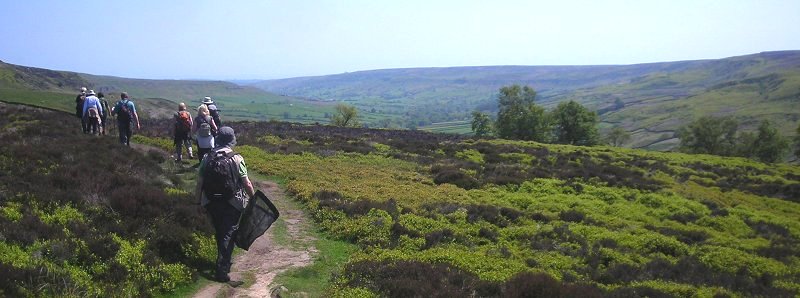
Back to the Home page
Species lists below

Fourteen members and two guests (Cleveland Field Nats and Whitby Nats) attended this meeting on a gloriously sunny day, the first for some weeks as this area has been dogged by sea fret. We met at the Millennium stone at 1030hrs and after a short walk along the road we headed west over the moor using an unmarked track. A golden plover was a nice sight perched on a small hillock.
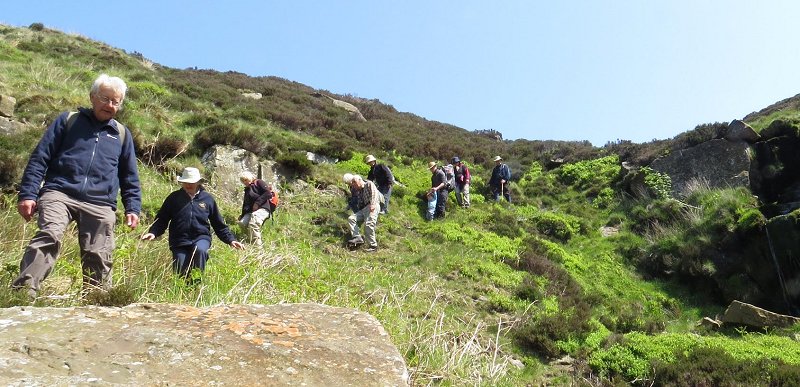
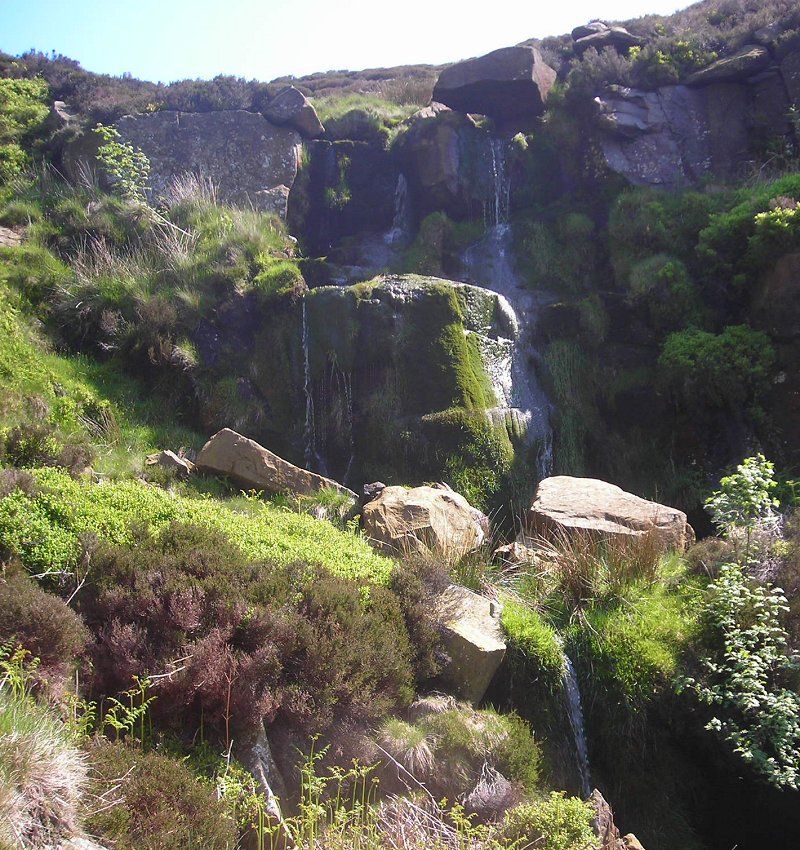
We descended in to Reeking Gill near the head and followed its small beck downstream. This area is rarely frequented by walkers and very much unspoilt. It was good to see green hairstreak still on the wing. The gill opens up and deepens at the waterfall, which can be quite formidable after heavy rainfall but was fairly quiet on this occasion. Again, another careful descent was made down the steep-sided gill along the side of the waterfall. A wet flush was visited on the north side containing lousewort and marsh violet amongst other things.
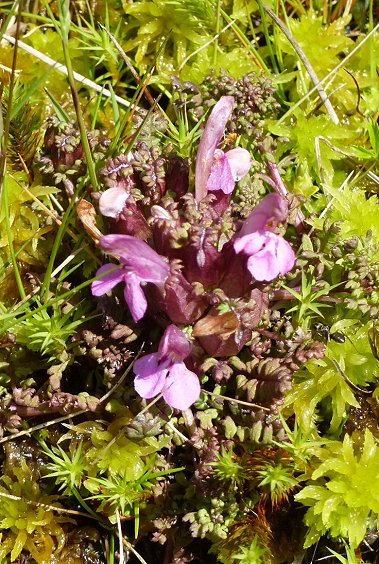 |
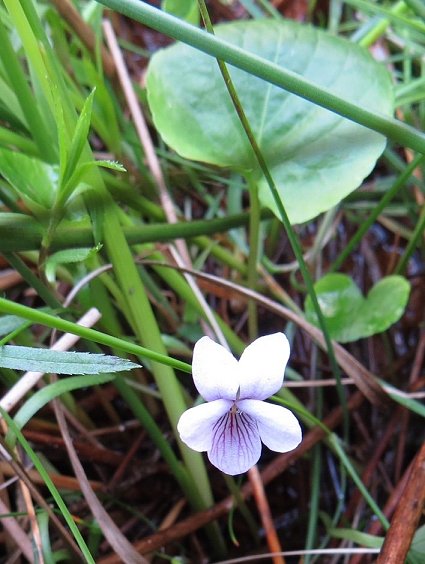
|
This area also has sneezewort but alas, a bit early for flowers. A female large red damselfly was seen, the only one of the day. One old ring ouzel nest was pointed out to members. We saw a couple of marsh thistles that had a “sport” where several heads had fused together – this is known as fasciation
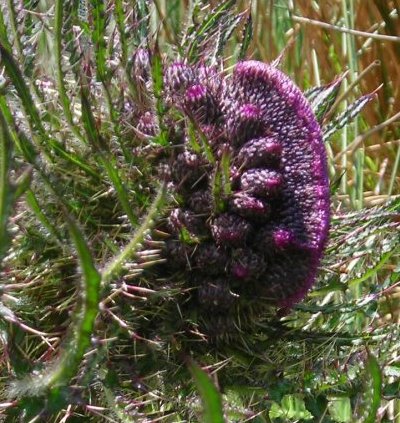
| 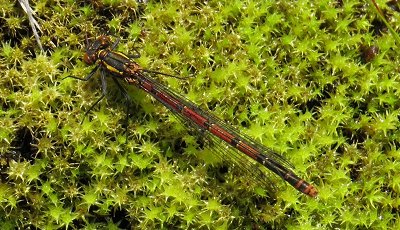 |
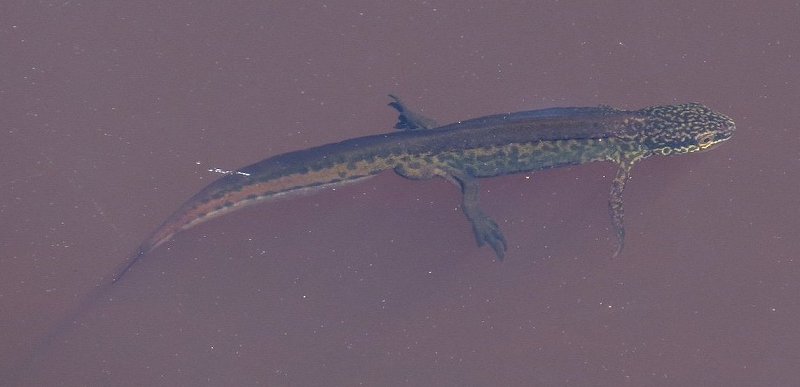
There was also a good show of round-leaved water crowfoot in one of the ponds along the railway.
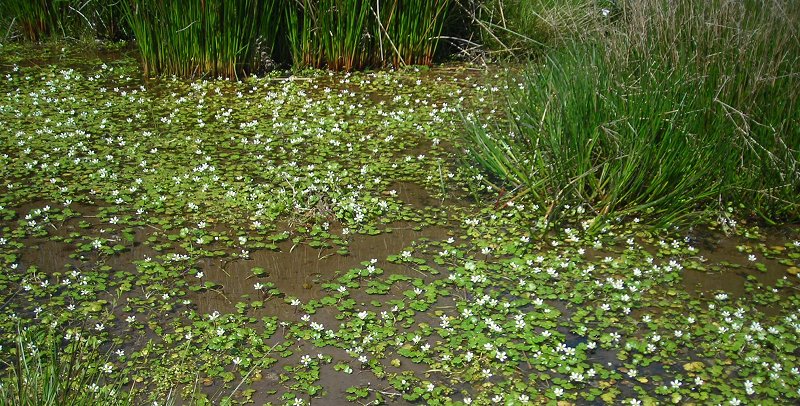
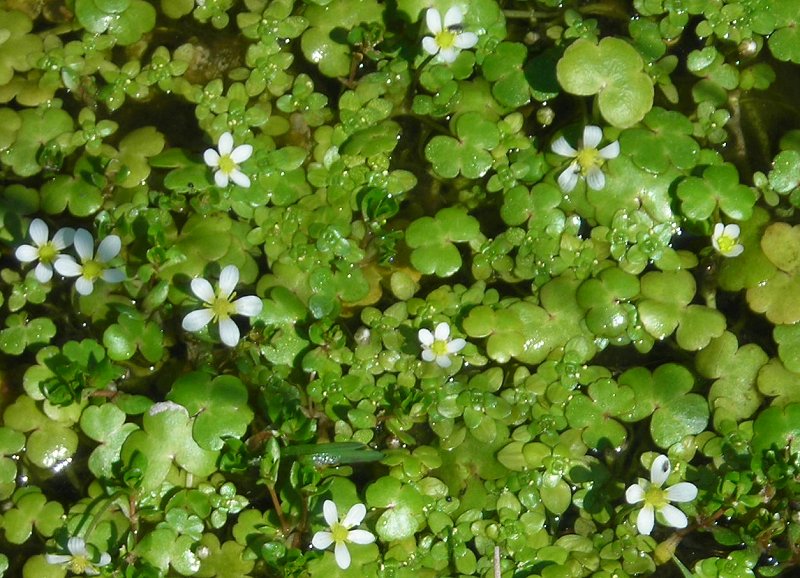
We retraced our steps south to Reeking Gill and continued on the old railway line to a bog area containing yellow pimpernel in flower and the locally rare New Zealand willowherb yet to flower. We also saw the very beautiful chickweed wintergreen (which is neither a chickweed nor a wintergreen!).
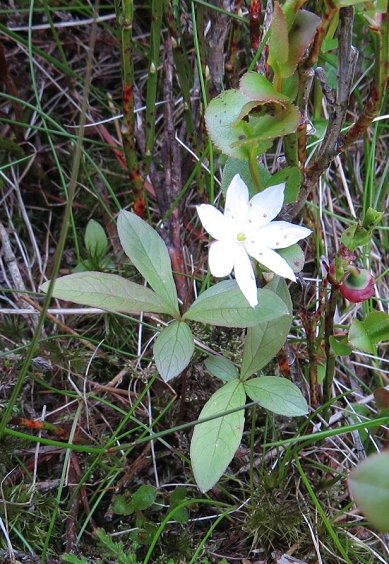
| 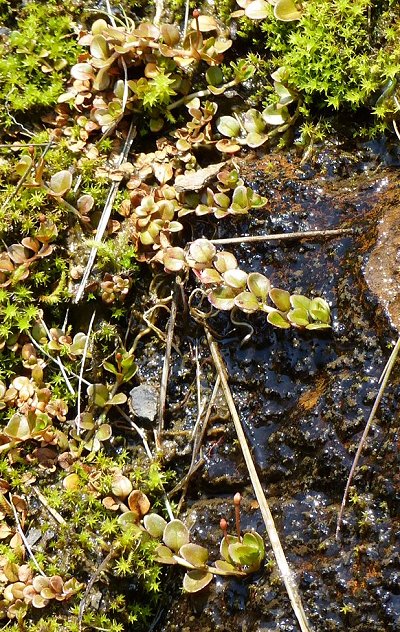 |
Eventually we ascended Sturdy bank Gill along its NE edge where we saw a number of grouse chicks. Finally we headed back north over the moor via a bridleway.
Full lists are found below. It was a disappointing day for birds as we would like to have seen stonechat and wheatear which are known to be in this area. Only two molluscs were found but it is not a good habitat for them.
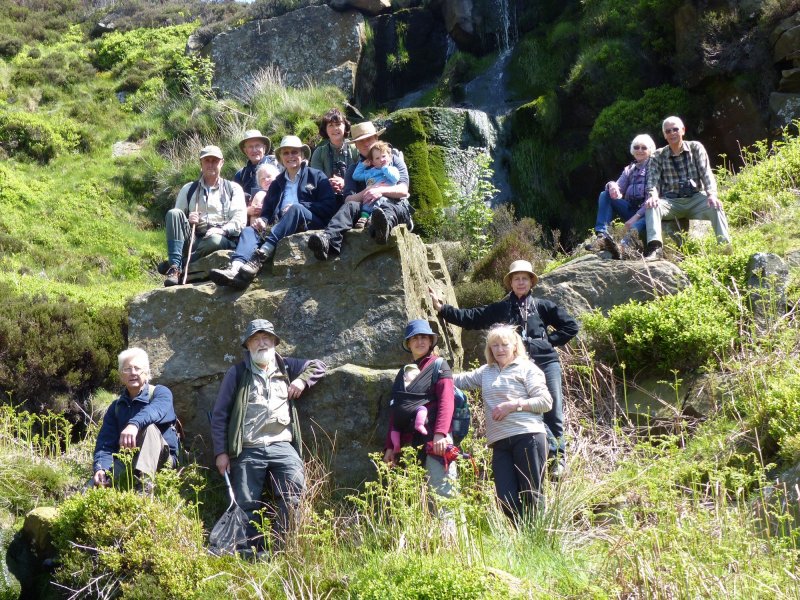
The meeting concluded at about 1600hrs with butterfly and cherry buns.
| Latin name | Common name |
|---|---|
| Achillea ptarmica | Sneezewort |
| Bellis perennis | Daisy |
| Betula sp. | Birch |
| Blechnum spicant | Hard Fern |
| Callitriche agg. | Starwort |
| Calluna vulgaris | Heather or Ling |
| Cardamine amara | Bittercress, large |
| Cardamine hirsuta | Bittercress, hairy |
| Cardamine pratensis | Cuckoo flower or Milkmaid |
| Carex echinata | Star sedge |
| Carex nigra | Common sedge |
| Carex ovalis | Oval sedge |
| ? Carex viridula | Yellow sedge |
| Cerastium fontanum | Mouse ear, common |
| Ceratocapnos claviculata | Corydalis, climbing |
| Chrysosplenium oppositifolium | Golden saxifrage, opposite leaved |
| Cirsium vulgare | Thistle, spear |
| Crataegus monogyna | Hawthorn |
| Dactylorhiza fuchsii | Orchid, common spotted |
| Digitalis purpurea | Foxglove |
| Dryopteris dilatata | Common Buckler Fern |
| Empetrum nigrum | Crowberry |
| Epilobium brunnescens | Willowherb, New Zealand |
| Erica tetralix | Cross leaved heath |
| Eriophorum angustifolium | Cottongrass, common |
| Eriophorum vaginatum | Cottongrass, harestail |
| Erophila verna | Spring whitlowgrass |
| Festuca rubra | Fescue, Red |
| Fraxinus excelsior | Ash |
| Galium saxatile | Bedstraw, heath |
| Hydrocotyle vulgaris | Marsh pennywort |
| Hypericum pulchrum | St Johnswort, beautiful |
| Ilex aquifolium | Holly |
| Juncus effusus | Soft Rush |
| Juncus squarrosus | Heath Rush |
| Larix sp. (L. decidua) | Larch |
| Lotus corniculatus | Birdsfoot trefoil, common |
| Luzula campestris | Woodrush, field |
| Luzula multiflora | Woodrush, heath |
| ? Lychnis flos-cuculi | Ragged robin |
| Lysimachia nemorum | Yellow pimpernel |
| Montia fontanum | Blinks |
| Nardus stricta | Mat Grass |
| Oreopteris limbosperma | Lemon-scented or Mountain Fern |
| Oxalis acetosella | Wood sorrel |
| Pedicularis sylvatica | Lousewort, common |
| Plantago lanceolata | Plantain, ribwort |
| Poa pratensis | Meadow Grass, Smooth |
| Polygala serpyllifolia | Milkwort, heath |
| Potamogeton sp. | Pondweed sp. |
| Potentilla erecta | Tormentil |
| Prunella vulgaris | Self heal |
| Pteridium aquilinum | Bracken |
| Quercus sp. | Oak |
| Ranunculus ficaria | Celandine, lesser |
| Ranunculus omiophyllus | Water crowfoot, round leaved |
| Rumex acetosa | Sorrel, common |
| Rumex acetosella | Sorrel, sheeps |
| Sagina procumbens | Pearlwort, procumbent or mossy |
| Salix caprea | Willow, goat |
| Sorbus aucuparia | Rowan |
| Stellaria holostea | Stitchwort, greater |
| Stellaria uliginosa | Stitchwort, bog |
| Taraxacum sp. | Dandelion |
| Teucrium scorodonia | Wood sage |
| Trientalis europaea | Chickweed wintergreen |
| Trifolium dubium | Trefoil, lesser |
| Vaccinium myrtillus | Bilberry |
| Veronica arvensis | Speedwell, wall |
| Veronica chamaedrys | Speedwell, germander |
| Veronica serpyllifolia | Speedwell, thyme leaved |
| Viola palustris | Violet, marsh |
| Viola riviniana | Violet, common dog |
(thanks to Melanie Earle)
Sphagnum cuspidatum
Sphagnum capillifolium subsp. rubellum
Sphagnum squarrosum - very distinctive pointy one, easy to recognise in the field
Sphagnum palustre
Sphagnum fallax
Sphagnum quinquefarium
(thanks to Melanie Earle)
Galerina paludosa
Galerina spp. (at least 2 not including paludosa)
Rickenella fibula
Entoloma sp.
Panaeolus sp.
Gymnopus (Collybia sp, probably dryophilus)
(thanks to Tom Denney)
buzzard, kestrel, curlew, redstart, cuckoo, reed bunting (female), chaffinch, willow warbler, swallow, wren, ring ouzel, meadow pipit, lapwing, blackbird, golden plover, grouse including chicks, wood pigeon, herring gull and carrion crow.
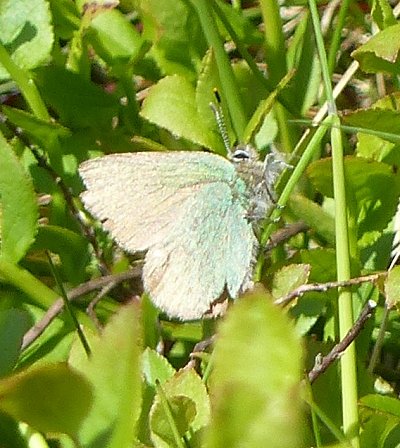
(thanks to Terry Crawford)
Plutella xylostella - Diamond-back Moth
Philedonides lunata - (Heath Twist)
Pieris napi - Green-veined White
Callophrys rubi - Green Hairstreak (photo, right)
Opisthograptis luteolata - Brimstone Moth
Ematurga atomaria - Common Heath
Phragmatobia fuliginosa - Ruby Tiger
Phytometra viridaria - Small Purple-barred
Autographa gamma - Silver Y
Gonepteryx rhamni - Brimstone Butterfly
(thanks to Terry Crawford)
Cochlicopa lubricella - snail
Arion ater agg. (immature) - slug
tadpoles, palmate newt, whirligig beetle, water boatman, ?pond skater, large red damselfly (female), green tiger beetle, click beetle, common lizard, white tailed bumblebee.
| © Ryedale Natural History Society 2016, Photos © Gill Smith, Jayne Smith, Pauline Popely 2016 |